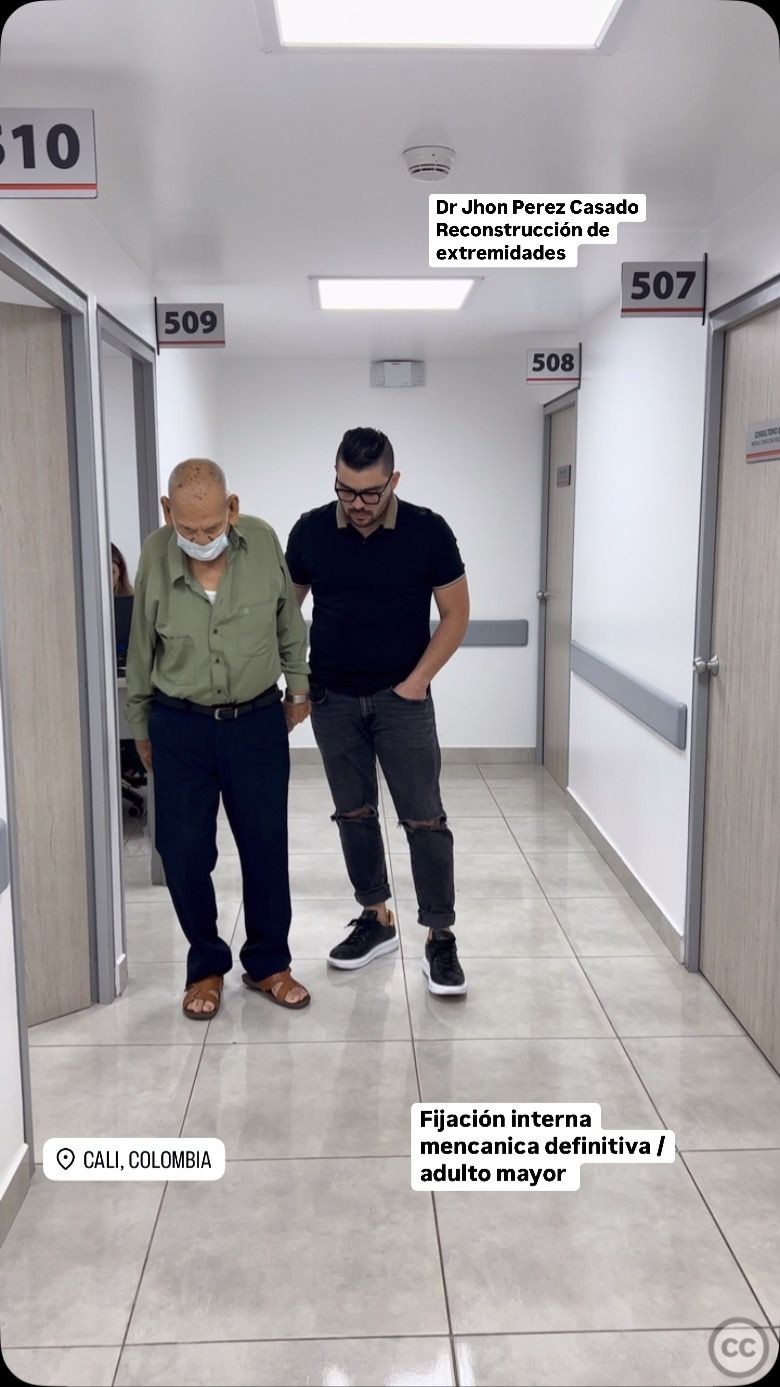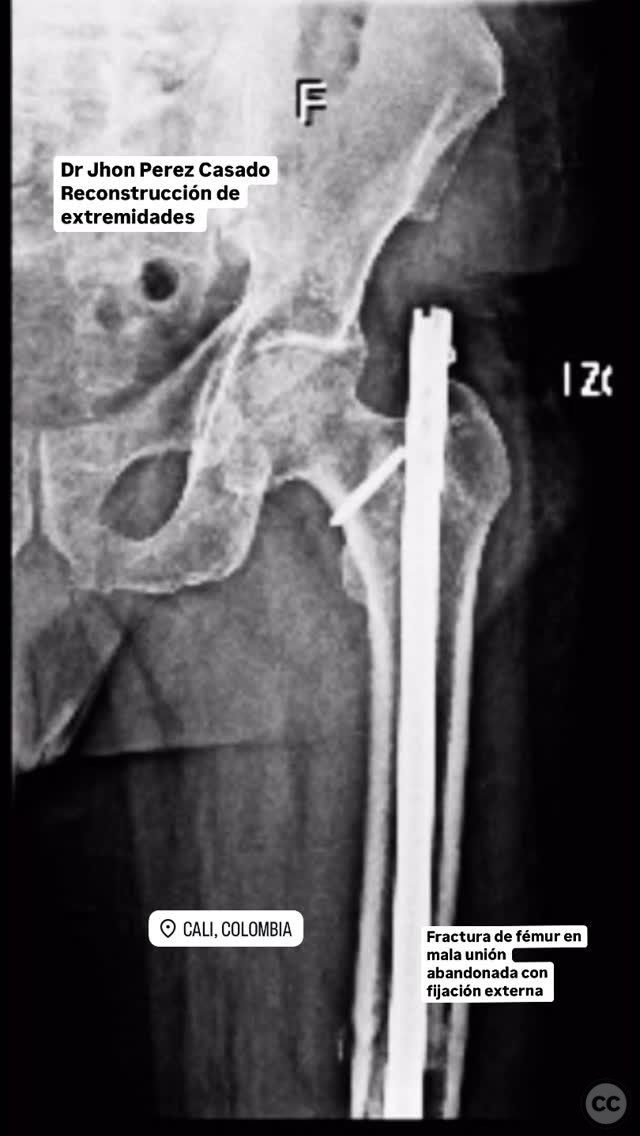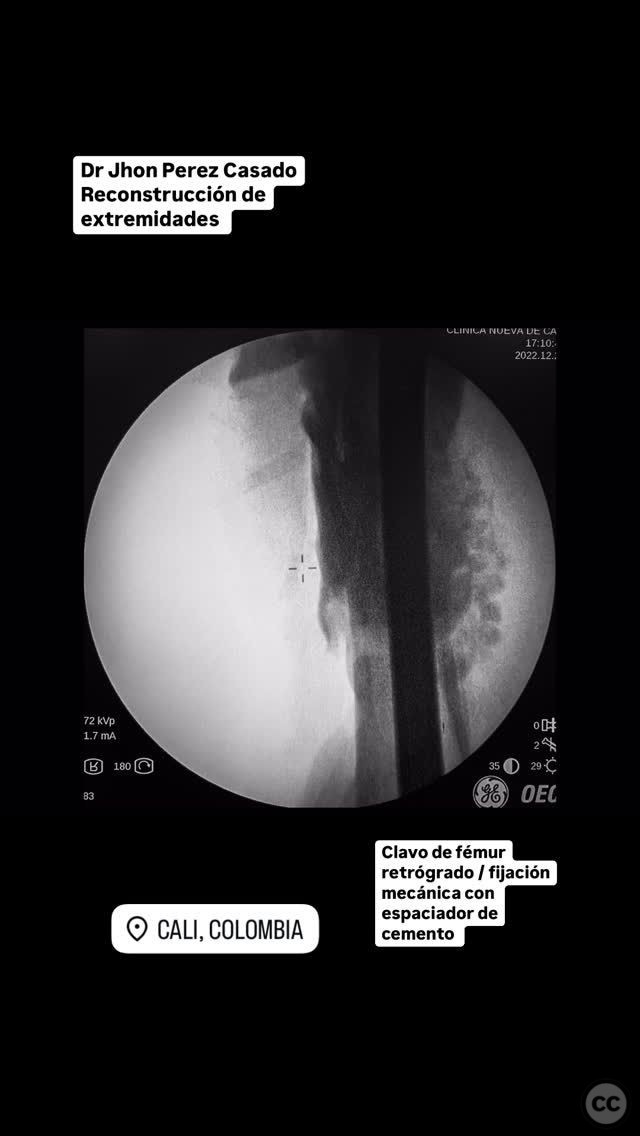Infected Femoral Malunion with Pseudoarthrosis Treated with Retrograde Nailing and Masquelet Technique
Score and Comment on this Case
Clinical Details
Clinical and radiological findings: An elderly adult presented with an infected malunion of the femur following previous intramedullary nailing, which had been removed. The patient had a history of external fixation that was subsequently abandoned. Radiological evaluation confirmed the presence of pseudoarthrosis and infection at the fracture site.
Preoperative Plan
Planning remarks: The preoperative plan included removal of any remaining external fixator components, debridement of infected tissue, and preparation for mechanical stabilization using a retrograde femoral nail. The plan also involved medullary canal cleaning using the J&J RIA2 system, followed by the application of a cement spacer and Masquelet technique for bone regeneration.
Surgical Discussion
Patient positioning: The patient was positioned supine on a radiolucent table to facilitate access to the distal femur for retrograde nailing.
Anatomical surgical approach: A longitudinal incision was made over the distal femur, extending proximally as needed to access the pseudoarthrosis site. Subperiosteal dissection was performed to expose the femoral shaft. The medullary canal was accessed distally for retrograde nailing, and thorough debridement of infected tissue was conducted. The canal was reamed using the RIA2 system.
Operative remarks:The surgeon noted significant infection and necrotic tissue at the pseudoarthrosis site, necessitating extensive debridement. A cement spacer was placed to maintain limb length and alignment while delivering local antibiotics. The Masquelet technique was employed to promote future bone regeneration, with plans for staged reconstruction.
Postoperative protocol: Postoperatively, the patient was instructed to remain non-weight bearing on the affected limb. A rehabilitation protocol focusing on range of motion exercises for adjacent joints was initiated, with gradual progression to partial weight-bearing as tolerated.
Follow up: Not specified
Orthopaedic implants used: Retrograde femoral nail, J&J RIA2 system, cement spacer, Masquelet membrane technique components.
Search for Related Literature

Jhon Perez Casado
- Colombia , Cali - Valle del Cauca
- Area of Specialty - Lower Limb
- Position - Specialist Consultant

Industry Sponsership
contact us for advertising opportunities



Article viewed 92 times
23 Jul 2025
Add to Bookmarks
Full Citation
Cite this article:
Perez Casado, J.J.. (2025). Infected Femoral Malunion with Pseudoarthrosis Treated with Retrograde Nailing and Masquelet Technique. Journal of Orthopaedic Surgery and Traumatology. Case Report 11145419 Published Online Jul 23 2025.